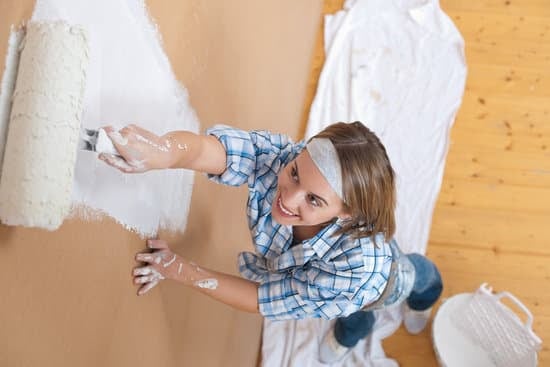Home improvement projects are a common undertaking for homeowners looking to enhance the comfort, functionality, and value of their properties. From renovating kitchens to adding extra rooms or improving energy efficiency, these endeavors can be significant investments. However, did you know that some of these expenses may be eligible for tax deductions? That’s right – certain home improvement spending may provide opportunities for homeowners to save money come tax season.
Understanding the potential tax benefits of home improvement expenses is crucial for smart financial planning. By effectively navigating the complex world of tax deductions, homeowners can maximize their savings and have more funds available for further improvements or other important investments. With careful consideration and adherence to specific guidelines, home improvement projects can offer not just aesthetic improvements but also long-term financial benefits.
In this article, we will delve into the details of home improvement tax deductions and shed light on how they can impact personal finances. We will explore what tax deductions are and how they can benefit homeowners, discuss criteria that must be met to qualify for these deductions, and outline various types of expenses that could potentially be eligible.
Additionally, we will provide valuable insights from Internal Revenue Service (IRS) guidelines, advise on proper documentation and record-keeping practices, highlight limitations and exclusions to be aware of, offer strategies to maximize tax deductions, address frequently asked questions, and ultimately emphasize the potential benefits of properly utilizing home improvement tax deductions.
Whether you’re planning a major renovation or making smaller upgrades around your home, understanding the possibility of tax deductions can make a significant difference in your overall expenses. So let’s dive into the world of home improvement spending and discover the potential savings it holds through tax deductions.
Understanding Tax Deductions
Tax deductions are a valuable financial tool that homeowners can utilize to save money on their home improvement expenses. But what exactly are tax deductions and how can they benefit homeowners? In this section, we will explore the concept of tax deductions and its implications for homeowners.
Tax deductions refer to expenses that can be subtracted from an individual’s taxable income, ultimately reducing the amount of tax they owe. These deductions are aimed at encouraging specific behaviors or activities deemed beneficial for individuals and the economy as a whole. Home improvements are one such behavior that is often incentivized through tax deductions.
For homeowners, tax deductions provide an opportunity to save money by reducing their overall tax liability. By deducting eligible home improvement expenses, homeowners can effectively lower their taxable income, resulting in a smaller tax bill. This essentially means that some of the money spent on improving one’s home can be recouped through potential tax savings.
The benefits of utilizing tax deductions for home improvement spending are significant. Not only do they help reduce the financial burden of renovations or repairs, but they also encourage homeowners to invest in their properties, contributing to the overall stability and growth of the housing market. Moreover, by reducing taxable income and potentially lowering overall taxes owed, homeowners have more disposable income available for future projects or other essential expenses.
Understanding how tax deductions work in relation to home improvement spending is crucial for homeowners looking to maximize their savings. In the next section, we will discuss the eligibility criteria that must be met in order to qualify for home improvement tax deductions.
Eligibility Criteria
To qualify for home improvement tax deductions, homeowners must meet certain criteria set by the IRS. These eligibility criteria help determine whether the expenses incurred on home improvements can be claimed as deductions on tax returns.
Firstly, the home that is being improved must be considered the homeowner’s primary residence. This means that it is their main place of living and not a rental property or second home. Homeowners can only claim tax deductions on improvements made to their primary residence.
Additionally, the improvements made to the home must add value to the property or prolong its useful life. Ordinary repairs and maintenance expenses are generally not eligible for tax deductions. However, if the repair is part of a larger home improvement project that increases the value or extends the useful life of the property, it may qualify for a deduction.
Furthermore, homeowners must also own the property in order to claim tax deductions on home improvement expenses. If someone is renting a property or does not have legal ownership rights, they cannot deduct any expenses related to improving that property.
It is important for homeowners to keep these eligibility criteria in mind when planning and budgeting for home improvement projects. Meeting these criteria ensures that they can take advantage of potential tax deductions, ultimately reducing their overall costs and maximizing their financial benefits from their investment in improving their homes.
Types of Home Improvement Expenses
When it comes to home improvement expenses, homeowners may be wondering which types of expenses can potentially be tax deductible. The good news is that there are several categories of home improvement expenses that may qualify for tax deductions.
One common type of home improvement expense that can be tax deductible is energy-efficient upgrades. This includes installing solar panels, energy-efficient windows or doors, insulation improvements, and efficient heating or cooling systems. These upgrades not only help reduce the homeowner’s carbon footprint but also provide potential tax benefits.
Another category of tax-deductible home improvement expenses is medically necessary improvements. If a homeowner makes modifications to their residence to accommodate a disability or medical condition, these expenses may qualify for deductions. Examples include ramps, wheelchair lifts, modified bathroom fixtures, and door widening.
Additionally, repair and maintenance expenses related to the home can also potentially be tax deductible. However, it’s important to note that ordinary repairs and maintenance do not usually qualify for deductions unless they are part of a larger home improvement project. Examples of qualifying repair and maintenance expenses include fixing a roof after storm damage or repairing plumbing issues during a renovation.
| Category | Examples |
|---|---|
| Energy-Efficient Upgrades | Solar panels, energy-efficient windows or doors, insulation improvements |
| Medically Necessary Improvements | Ramps, wheelchair lifts, modified bathroom fixtures |
| Repair and Maintenance Expenses (part of larger projects) | Fixing storm damage to roof, repairing plumbing issues during renovation |
It’s important for homeowners to remember that not all home improvement expenses qualify for tax deductions. It is crucial to consult with a tax professional or refer to the specific guidelines provided by the IRS to determine eligibility and ensure accurate deductions.
IRS Guidelines
The Internal Revenue Service (IRS) provides specific guidelines for homeowners who want to claim tax deductions on their home improvement spending. Understanding these guidelines is crucial to ensure that you are eligible for the deductions and that you can maximize your tax benefits.
First and foremost, it’s important to note that not all home improvements are eligible for tax deductions. The IRS distinguishes between repairs and improvements. Repairs are considered to restore or maintain your home’s original condition, while improvements enhance the value, adaptability, or quality of your property. Only improvements are potentially eligible for tax deductions.
To qualify for a tax deduction, the IRS requires that the home improvement be considered “capital expense.” This means that it must be expected to last more than one year. Examples of capital expenses may include adding a new room, installing energy-efficient windows or solar panels, or updating a kitchen or bathroom.
Additionally, the IRS specifies that the home improvement must be made on your primary residence in order to claim a tax deduction. Any improvements made on rental properties or second homes may not be eligible for deductions.
To properly claim a tax deduction on your home improvement expenses, you will need to itemize your deductions by using Schedule A of Form 1040 when filing your taxes. Be sure to keep accurate records and collect receipts related to the improvement expenses as evidence supporting your claims.
It is recommended to consult with a tax professional or refer directly to the IRS guidelines (IRS Publication 530) for more detailed information regarding eligibility and documentation requirements for claiming tax deductions on home improvement spending.
| Eligible Home Improvement Expenses | Ineligible Home Improvement Expenses |
|---|---|
| Adding a new room | Repairs and maintenance |
| Installing energy-efficient windows | Improvements on rental properties |
| Updating a kitchen or bathroom | Improvements on second homes |
Documentation and Record-Keeping
When it comes to claiming tax deductions on home improvement spending, one of the most crucial aspects is maintaining proper documentation and record-keeping. Keeping accurate records not only ensures that you can back up your claims but also helps you maximize your potential deductions. Here are some essential tips and advice to help you navigate this crucial aspect of claiming tax deductions:
- Create a dedicated filing system: Establishing a specific filing system for your home improvement expenses will make it easier to keep track of all relevant documents. This could include receipts, invoices, contracts, and any other paperwork related to your home improvement projects.
- Separate personal from business expenses: If you are a homeowner with a home-based business, it is important to separate personal home improvement expenses from those that are deductible as business expenses. Clearly label and categorize these expenses accordingly to avoid any confusion during tax filing.
- Keep detailed records of expenditures: To ensure accurate calculations and proper allocation of expenses, maintain thorough records of all costs associated with your home improvement projects. This includes materials, labor costs, permits and fees, and any other related expenditures.
- Save digital copies: In addition to physical copies of receipts and invoices, it is also advised to save digital copies of all relevant documentation. Scan or photograph your papers and create a backup in cloud storage or an external hard drive for added security.
- Consult a tax professional: If you are unsure about what types of records need to be kept or how long they should be retained, consider seeking advice from a qualified tax professional. They can guide you through the intricacies of record-keeping specific to your situation.
By taking the time and effort to maintain meticulous records, homeowners can greatly increase their chances of successfully claiming tax deductions on their home improvement spending. Not only does this provide proof for the Internal Revenue Service (IRS), but it also allows homeowners to maximize their deductions and reduce their overall tax liability. Remember, accurate record-keeping is key to claiming the tax benefits you deserve.
Limitations and Exclusions
Home Improvement vs. Home Repairs
One important aspect that homeowners should be aware of when it comes to home improvement tax deductions is the distinction between home improvement and home repairs. While both may involve renovations or upgrades to a property, they are not treated the same way in terms of tax deductions.
The IRS defines home improvements as projects that add value to a property, prolong its useful life, or adapt it to new uses. This can include additions, renovations, installing energy-efficient systems, or remodeling an area of the home. On the other hand, home repairs address issues like fixing a leaky roof, repairing plumbing or electrical systems, or replacing broken windows.
It’s important for homeowners to understand this distinction because only expenses related to home improvements can potentially be tax deductible. Home repairs are considered regular maintenance and do not qualify for deductions. Therefore, when considering potential tax deductions for home improvement projects, homeowners should ensure that their expenses meet the criteria set by the IRS.
Personal Use vs. Rental Property
Another limitation that homeowners should keep in mind is regarding personal use versus rental property. The IRS treats these two scenarios differently when it comes to qualifying for tax deductions on home improvement spending.
For homeowners who primarily use their property as their primary residence, any eligible expenses incurred for home improvements may be considered personal expenses but would not be tax-deductible.
However, if a homeowner owns a rental property and incurs expenses for making improvements to that property, those expenses may qualify as business-related expenditures and could potentially be tax deductible. It is important for homeowners with rental properties to consult with a tax professional or review IRS guidelines to understand what qualifies as eligible expenses and how they can maximize their deductions.
Limits on Deductible Expenses
Lastly, homeowners should be aware of certain limitations on deductible expenses when it comes to home improvement tax deductions. The IRS sets certain thresholds and guidelines that determine the maximum amount that can be deducted for certain types of expenses.
For example, expenses related to energy-efficient improvements like solar electric systems or residential wind turbines may be subject to specific limits on the amount deductible. Additionally, there may be restrictions on the total amount of home improvement expenses homeowners can deduct in a given tax year.
It is crucial for homeowners to review IRS guidelines or consult with a tax professional to understand these limitations and exclusions so they can accurately calculate their potential deductions and maximize their tax savings.
By being aware of these limitations and exclusions, homeowners can ensure they are making informed decisions when it comes to home improvement spending and take full advantage of any available tax deductions.
Maximizing Tax Deductions
One of the main advantages of home improvement spending is the potential for tax deductions. Homeowners can take advantage of various strategies and techniques to maximize their tax deductions and ultimately save money. By understanding the IRS guidelines and properly documenting expenses, homeowners can ensure they are maximizing their deductions.
One strategy to maximize tax deductions on home improvement spending is to consider a home office deduction. If you use a part of your home exclusively for business purposes, you may be eligible for this deduction. The space must be used regularly and exclusively for business activities, such as a separate room used as an office or a portion of a room designated solely for work tasks.
Another way to maximize tax deductions is by taking advantage of energy-efficient improvements. The IRS provides incentives for homeowners who make energy-efficient upgrades such as installing solar panels, upgrading insulation, or replacing old appliances with energy-efficient ones. These improvements not only help reduce utility bills but also qualify for certain tax credits or deductions.
Furthermore, it’s essential to keep accurate records and documentation of all expenses related to home improvement projects. This includes receipts, invoices, contracts, and any other relevant paperwork that can support your claims. Maintaining thorough records will not only help you accurately calculate your deductions but also serve as evidence in case of an audit.
By implementing these strategies and techniques, homeowners can effectively maximize their tax deductions on home improvement spending. From utilizing a home office deduction to taking advantage of energy-efficient upgrades, there are numerous ways to lower your taxable income and potentially save money. It’s important to consult with a tax professional or refer directly to the specific guidelines provided by the IRS to ensure eligibility and make the most out of these deductions.
Frequently Asked Questions
What is considered a home improvement expense?
One common question that homeowners have when it comes to tax deductions for home improvement spending is what exactly qualifies as a “home improvement expense”. According to the Internal Revenue Service (IRS), home improvement expenses refer to any costs incurred for renovations or additions that substantially add value to the taxpayer’s primary residence.
This can include anything from remodeling projects, such as kitchen or bathroom renovations, to the installation of energy-efficient equipment or systems like solar panels or geothermal heat pumps.
It’s important to note that routine repairs and maintenance tasks are generally not eligible for tax deductions. These would include things like fixing a leaky faucet, repainting walls, or replacing worn-out carpeting.
To qualify as a deductible expense, the work conducted on the home must enhance its value or prolong its useful life. Home improvements made purely for aesthetic purposes, such as adding decorative trim or wallpaper, may not be eligible unless they contribute significantly to the home’s overall worth.
Can I deduct expenses for DIY home improvements?
Another frequently asked question by homeowners is whether they can deduct expenses for do-it-yourself (DIY) home improvement projects. The IRS allows taxpayers to claim tax deductions on materials purchased for DIY projects if they meet the eligibility criteria outlined earlier. However, labor costs incurred from personal efforts are generally not deductible.
If you hired contractors or professionals for certain portions of your project, you may be able to deduct these labor costs as part of your overall home improvement expenses. It is essential to keep detailed records and receipts that clearly delineate material costs versus labor costs in order to accurately claim deductions.
Are there any income limitations when claiming tax deductions?
Many homeowners wonder if there are any income limitations when it comes to claiming tax deductions for home improvement spending. The good news is that there are typically no income restrictions imposed specifically on home improvement deductions. However, it is worth noting that high-income taxpayers may be subject to the Alternative Minimum Tax (AMT), which could limit their ability to fully benefit from certain deductions, including those for home improvement expenses.
It is advisable for homeowners in higher income brackets to consult with a tax professional or tax advisor to ensure they are maximizing their deductions while avoiding any potential limitations imposed by the AMT. Additionally, specific state or local regulations may have their own rules and limitations when it comes to deducting home improvement expenses, so homeowners should familiarize themselves with these guidelines as well.
Conclusion
In conclusion, home improvement spending can potentially be a tax deduction that can greatly benefit homeowners. Throughout this article, we have discussed the significance of home improvement spending and explained how tax deductions work to provide financial benefits. It is important for homeowners to understand the eligibility criteria and specific guidelines provided by the IRS in order to qualify for these deductions.
We have also outlined the various types of home improvement expenses that can potentially be tax deductible. From renovations and repairs to energy-efficient upgrades, homeowners may be able to claim deductions for a wide range of expenses. However, it is crucial to keep accurate documentation and records to support these claims.
While there are certain limitations and exclusions to consider when it comes to home improvement tax deductions, homeowners can still maximize their potential benefits. By staying informed about current regulations and consulting with a tax professional if needed, individuals can properly utilize these deductions to reduce their overall tax liability.
Properly utilizing home improvement tax deductions has the potential to save homeowners significant amounts of money. By taking advantage of these deductions, not only can you improve your living space but also enhance your personal finances.
So, make sure you are aware of the IRS guidelines, keep accurate records, and explore different strategies to maximize these deductions. With proper planning and attention to detail, you can enjoy both the improvements made in your home and the financial advantages that come with it.
Frequently Asked Questions
Can I write off home improvements on my taxes?
Whether or not you can write off home improvements on your taxes depends on the nature of the improvements and your specific circumstances. In general, home improvements that increase the value, efficiency, or accessibility of your home may be eligible for tax deductions or credits.
However, it is important to note that ordinary repairs and maintenance expenses are typically not considered tax-deductible. To determine if your home improvements qualify for tax benefits, consult with a tax professional or review the guidelines provided by the Internal Revenue Service (IRS) to understand what types of improvements may be eligible for deductions or credits.
What are the tax breaks for home improvements in 2023?
As an AI language model, I cannot predict specific details about tax breaks for home improvements in 2023 as tax laws and regulations are subject to change over time.
It is recommended to consult with a qualified tax professional or stay updated with the latest information from reliable sources such as the IRS or government websites to learn about any potential tax breaks related to home improvements that may be applicable in 2023.
What happens if you don t have receipts for home improvements?
If you do not have receipts for home improvements, it could make it more challenging to substantiate your expenses and prove their eligibility for deductions on your taxes. Receipts serve as proof of payment and establish a paper trail of the expenses incurred.
While receipts are often preferred by tax authorities, it may still be possible to claim certain eligible home improvement expenses without them by providing alternative documentation or evidence such as bank statements, contractor agreements, cancelled checks, credit card statements, or photographs before-and-after the improvement work was done. Given that rules regarding proof of expenses can vary depending on factors like jurisdiction and individual circumstances, it is advisable to consult with a tax professional who can provide guidance specific to your situation and applicable laws in order to obtain accurate advice pertaining to this matter.

I’m thrilled to have you here as a part of the Remodeling Top community. This is where my journey as an architect and remodeling enthusiast intersects with your passion for transforming houses into dream homes.





